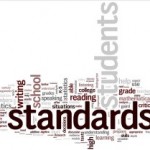 The establishment of Common Core State Standards (CCSS) for students nationwide represents a particularly robust challenge for teachers of students with special needs. On the one hand, advocates for students with disabilities have made it clear that they want these students to be held to the same high level of achievement as typically developing students. On the other hand, the particular disabilities that these students possess may make it difficult for them to meet certain standards. This is especially true if the avenues for meeting those standards are defined too rigidly. What follows are seven ways to help educators provide flexible means through which students with special needs can master the Common Core State Standards while still maintaining high expectations for achievement.
The establishment of Common Core State Standards (CCSS) for students nationwide represents a particularly robust challenge for teachers of students with special needs. On the one hand, advocates for students with disabilities have made it clear that they want these students to be held to the same high level of achievement as typically developing students. On the other hand, the particular disabilities that these students possess may make it difficult for them to meet certain standards. This is especially true if the avenues for meeting those standards are defined too rigidly. What follows are seven ways to help educators provide flexible means through which students with special needs can master the Common Core State Standards while still maintaining high expectations for achievement.
- Provide alternative means of expression. If the standard does not explicitly state that the student must perform the competency via written expression consider other means through which the student can meet it. For example: ELA.W.11.12.3b – Use narrative techniques such as dialogue, pacing, description, reflection, and multiple plot lines to develop experiences, events, and/or characters. In this case, narrative techniques might include having the student draw a cartoon strip, do an oral presentation, complete a work of art, compose a musical piece, or a write graphic novel.
- Utilize the students interests. For example: K.CC.6 – Identify whether the number of objects in one group is greater than, less than, or equal to the number of objects in another group, e.g., by using counting and matching strategies (include groups with up to 10 objects). If the student loves to play with miniature soldiers, let him use them in both learning about, and demonstrating mastery in the standard.
- Employ alternative texts. For example: 11-12.RST.6 – Analyze the author’s purpose in providing an explanation, describing a procedure, or discussing an experiment in a text, identifying important issues that remain unresolved. Let the student do the analysis and identifications using a ”text” other than a textbook or worksheet, such as a compelling novel or non-fiction work, a video, a talking book, a website, or a live interview with an expert.
- Use assistive technologies and Universal Design for Learning tools. For example: ELA.RL.4.3. – Describe in depth a character, setting, or event in a story or drama, drawing on specific details in the text (e.g., a character’s words, thoughts, or actions). Let the student use text-to-speech software (such as the Kurzweil 3000), or an interactive digital book to help with the reading of the story or drama.
- Engage the student’s strengths. For example: 7.G.3 – Describe the two-dimensional figures that result from slicing three-dimensional figures, as in plane sections of right rectangular prisms and right rectangular pyramids. If the student learns best through hands-on activities, let him slice volumes of clay, or some other malleable material, as a way of learning about two-dimensional figures that result from slicing three-dimensional figures.
- Pair the student with a typically developing student. For example: 2.MD.7 – Tell and write time from analog and digital clocks to the nearest five minutes, using a.m. and p.m. Have a typically developing student engage in peer-teaching with a student with special needs. Using real digital and analog clocks, let them take turns quizzing each other on the standard.
- Modify the environment. For example: 4.W.1.3 – Write narratives to develop real or imagined experiences or events using effective technique, descriptive details, and clear event sequences. Provide a comfortable environment for writing. Let students write in ways that they prefer such as: laying down, standing up, at a computer station, table or desk, with or without music, using pen, pencil (handgrips if needed), or computer.
The Common Core States Standards Initiative has clearly stated its policy concerning students with disabilities: ”In order for students with disabilities to meet high academic standards and to fully demonstrate their conceptual and procedural knowledge and skills in mathematics, reading, writing, speaking and listening (English language arts), their instruction must incorporate supports and accommodations.” [emphasis mine]. Educators are thus empowered to become creative in developing innovative ways through which students with special needs can acquire competency in and mastery of these nationwide standards.
For more strategies and tools to help students with special needs meet the requirements of the Common Core State Standards, see my book: Neurodiversity in the Classroom: Strength-Based Strategies to Help Students with Special Needs Succeed in School and Life.
 This article was brought to you by Thomas Armstrong, Ph.D. and www.institute4learning.com.
This article was brought to you by Thomas Armstrong, Ph.D. and www.institute4learning.com.
Follow me on Twitter: @Dr_Armstrong


















